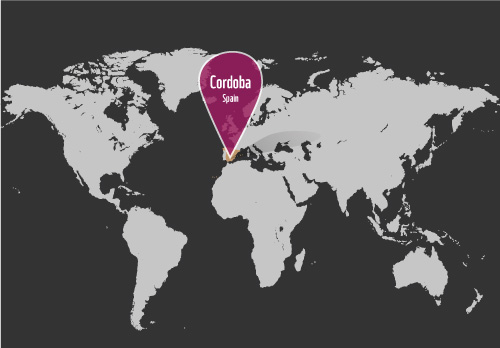The WWF is run at a local level by the following offices...
CÓRDOBA

Córdoba was once one of the largest cities in the world with an estimated population of up to a million people as the center of an Islamic caliphate in the 10th century. Today it is a medium-sized city of 330,000 inhabitants with the world’s largest urban area declared as a UNESCO World Heritage site. In December 2014, the historical buildings came alive in "The Magic City", an audiovisual mapping show that was attended by 100,000 people, and which celebrated the Córdoba Luze project, initiated in 2014. The project was also the focus of the Intelligent & Emotional Lighting for Cities conference held in Córdoba in November 2014, where members of the smart city network Spanish Network of Intelligent Cities convened.
Córdoba Luze halves energy consumption
The Córdoba Luze project intended to make Córdoba a role model in energy efficiency innovation with a number of projects, including investments in public lighting, renovation of public buildings, investments in network communications, and systems of monitoring and control. The city aims to achieve a 52% reduction of energy consumption in public lighting through installations of 50,000 LED lights and 730 electrical control panels, and a 33% energy efficiency improvement in public buildings via optimization of energy management and boiler replacements in 173 public building. The city also installed 10 rooftop solar PV systems.
The project also included a smart monitoring and control system, where street lighting, buildings, public spaces and infrastructure can be managed from one control center. Another important aspect of the program is using ICT to develop participatory government measures of transparency, involvement and cooperation. Córdoba has for instance developed the special service “72 hours to answer the citizens” which tries to solve local issues in less than 72 hours.
Córdoba – a livable and efficient city
Córdoba Luze was part of the larger program “Córdoba 10: The city we want", which included 50 actions in 50 neighborhoods, and aimed to develop Córdoba into a livable and efficient city. The plan received support from the EU-sponsored European Energy Efficiency Fund (EEEF) and used energy services companies to provide finance through energy efficiency gains. The EEEF supports European projects that will help the EU meet its 20/20/20 goals: cutting greenhouse gas emissions by 20%, increasing the use of renewable energy by 20%, and cutting energy consumption through improved energy efficiency by 20%.
Córdoba developed the Sustainable Energy Action Plan in 2009, which set the goal of reducing GHG emissions by 21.5% by 2020 from a 2007 baseline. The city has a typical service economy, with 48% of emissions from transport and 37% from buildings - and has promoted a modal shift through investments in public transport, cycle lanes, and an electrical vehicle infrastructure.
Córdoba also stands out for its many actions to promote sustainable practices in the wider community. It sponsors energy efficiency and green transports through regulations, tax incentives, subsidies and awareness campaigns. One example is Córdoba´s 5% tax reductions for companies that reduce their energy consumption by 7%. Other examples are reduced bus tariffs; incentives for electric vehicles including reduced road tax, parking and battery charging stations; and regulation, information and subsidies to support renewable energy installations in private houses. The Córdoba province is also known for its work with renewable energy, with several large thermal concentrated solar power plants and many biomass power plants that use byproducts of olive oil production.
Want to know more about Urban solutions?
Contact Barbara Evaeus
Global Communications Manager,
WWF One Planet City Challenge
+46 70 393 9030
barbara.evaeus@wwf.se
References
Energy News, “Córdoba launches the COLUZe project within the ‘CO10 Cordoba efficient and livable’ initiative”, January 23 2014, http://www.energynews.es/english/cordoba-launches-the-coluze-project-within-the-co10-cordoba-efficient-and-livable-initiative/
European Energy and Efficiency Fund, “Cities of Santander, Córdoba, Terrassa, Marbella and the Island Council of La Palma are cooperating with EEEF on the technical assistance”, http://eeef.lu/news-detail/items/Spanish_cities_will_receive_Technical_Assistance_to_support_project_development_activities_for_the_energy_efficiency_programmes.html
European Energy and Efficiency Fund, “EEEF supported the city of Córdoba at the 'Intelligent & Emotional Lighting for Cities' conference”, http://www.eeef.lu/news-detail/items/eef-supported-the-city-of-cordoba-at-the-intelligent-emotional-lighting-for-cities-conference.html
City of Córdoba, The Sustainable Energy Action Plan – Appendix II, http://carbonn.org/uploads/tx_carbonndata/AnexoI_Fichas%20de%20Acciones%20o%20Medidas%20de%20PAES%20Cordoba.pdf
carbonn Climate Registry, City Climate Report: Municipality of Cordoba, http://carbonn.org/data/report/commitments/?tx_datareport_pi1%5Buid%5D=660
Text by: Martin Jacobson
Last edited: 2017-03-15


